The past, the present and the modern co-exist in Munich as Kalpana Sunder comes across a makeshift shrine dedicated to Michael Jackson, visits Munich Conservatoire, which was once Hitler’s office, watches surfers ride the waves, and finds that the city’s transit system is a temple of art
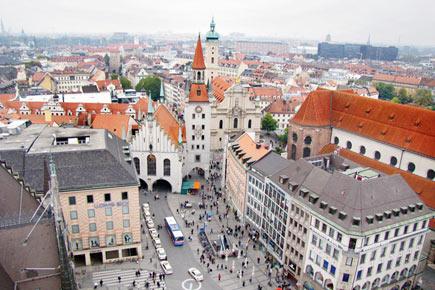
Munich, Travel special, Germany, Hitler's office, Isar River, Eisbach, man made channel, BMW Museum, Michael Jackson shrine, Hotel Bayerisher Hof, public square, Marienplatz
Munich
Best time to visit: All year round
You need: 4 days
Kitschy fan art, mushy messages, ruby-red lamps, colourful pictures, handwritten notes and gaudy ornaments lie beneath the statue of Renaissance composer Orlande de Lassus. Candles flicker and the fragrant smell of fresh flowers lingers in the air. This is a makeshift shrine to Michael Jackson, the King of Pop.
ADVERTISEMENT
An offbeat attraction in Munich, Birgit, the guide, tells me how Michael Jackson was a frequent visitor to Munich in the ’90s, and always stayed at his favourite place — the Hotel Bayerisher Hof.
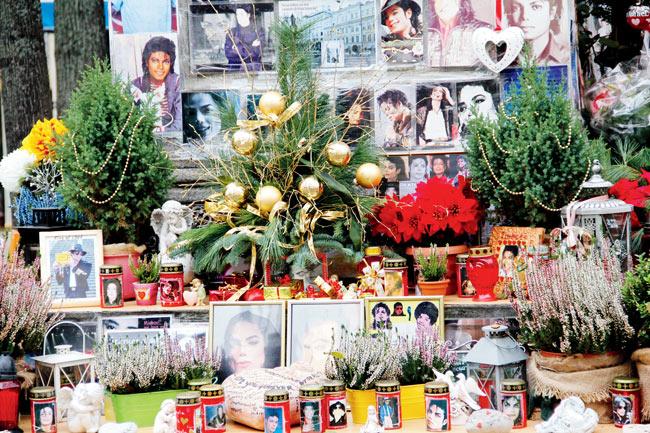
Shrine of Michael Jackson outside Hotel Bayerisher Hof, where the King of Pop usually put up during his visits to Munich
When MJ passed away in 2009, his fans converted the space in front of a statue near the hotel into an impromptu shrine. I watch a young fan cleaning the space diligently and arranging fresh flowers in vases. “Our fan club takes turns,” he tells me.
Winter time
I am in Munich again... the last time I was here was in the summer and my afternoons were spent in open-air beer gardens, strolling about in large public squares and watching passersby while I sipped a cup of coffee.
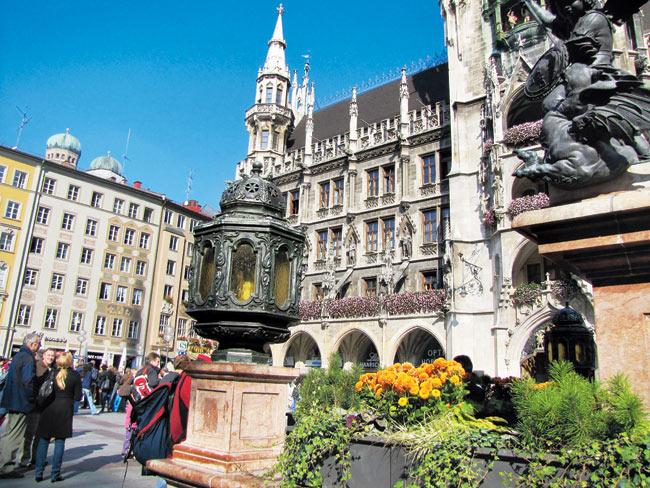
The public square, Marienplatz
This time, I am here in the winter, when the freezing temperatures and the Christmas markets give the largest city of Bavaria a totally different look. The heart of the city is the public square, Marienplatz, with the ornate Old Town Hall. The area used to be called Shannon but was re-named St Mary’s Square as a religious gesture to ask the Virgin Mary to protect the town from a cholera epidemic. I sit at a café and watch a parade of street musicians and mimes. In the backdrop is a 100-year-old clock, whose top half depicts the marriage of a Bavarian duke with a French Princess from the 16th century, and the bottom half re-creates a dance scene to celebrate the end of the Black Plague.
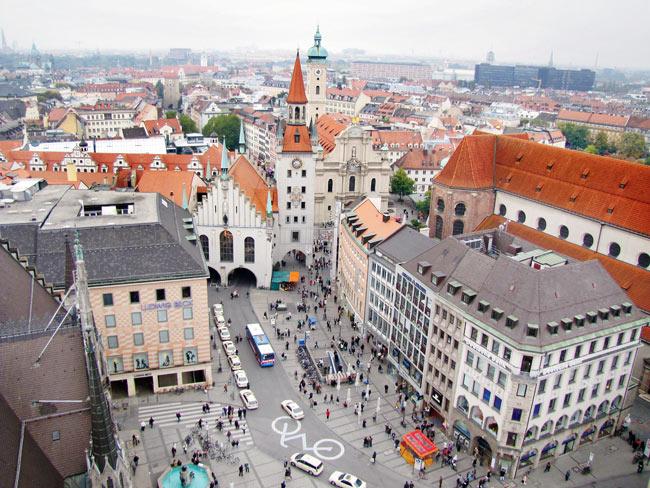
A top view of Munich, the largest city of German state
Munich has miles of dedicated cycle tracks, with their own traffic signals, which run parallel to the sidewalks. History is etched in every corner of the city. It’s only when I pass the three ancient gates — Karlstor, Sendlinger Tor and Isartor — that I realise this city was built inside medieval walls. We go to the White Rose Movement, a memorial for the Munich University students who resisted the Nazi rule during the war. They actively opposed Hitler until the Gestapo infiltrated their operation and executed everyone.
Hitler’s office
We drive past the Munich Conservatoire, which rings with the sound of piano music today, however, it was once Hitler’s office with marble floors, stone staircases and heavy wooden doors. Birgit points to a small balcony where Hitler would emerge to greet the masses gathered in the square below. Munich’s regal Maximilianstrasse was designed by Friedrich Bürklein, and has striking Art Nouveau buildings — it’s one of Munich’s four royal avenues named after a king — Maximilian II of Bavaria. We have dinner at the Lowenbraukeller Beer hall, a Munich institution with its green tower and open-air beer garden. I love the cosy atmosphere with painted ceilings, and enjoy our meal of pretzels with a cheese spread, glasses of dark beer, braised red cabbage and bread dumplings.
Here, Hitler used to give his annual Beer Hall memorial speeches during World War II, after the original beer hall, Bürgerbräukeller, was badly damaged by a bombing that was meant to kill him. Today, the wooden benches are packed with people as dirndl-clad waitresses, balance steins of beer mugs on a tray.
I walk through the Englischer Garten, one of the world’s largest urban parks in the city’s Central park with a lake, beer gardens and even a Chinese pagoda. Locals cycle and lounge around the lawns. “This is the place for nude sunbathing in the summer,” says my guide. At the Eisbach, a two-kilometre-long, channel branching off the Isar River, I stand on a bridge and watch surfers with sun-kissed tans. Tall and lithe men in wetsuits, line the banks, waiting for their turn to ride the waves.

A surfer glides on the waters of Eisbach, a two-kilometre-long, man-made channel branching off the Isar River. Pics/Kalpana Sunder
As the gushing water plumes out of two arches of the bridge, I watch fascinated as adrenalin-seeking surfers valiantly attempt to cling on to their long boards. Sign boards inexperienced river surfers not to attempt the sport — rocks and strong currents together make it a very perilous activity.
Surfers have been coming here since the 1970s, when they used to attach ropes to the bridge and use huge planks for boards. Often they would be chased by the police, as ,until the year 2010, surfing in the Eisbach was illegal!
Gradually, the surfers garnered enough publicity via the Internet and the sport was legalised. In August 2012, Munich even hosted the second European River Surfing Championships on an artificial wave!
Modern marvels
Munich’s architecture is not just time warp. It has its share of modern marvels. I am impressed by the striking façade of the Brandhorst Museum, which is made from 36,000-coloured ceramic rods fixed vertically, and houses more than hundred works of famous pop artist Andy Warhol. I visit the swish BMW Museum and the new Welt situated in a sea of green of the Olympia Park built for the Olympics. At the spanking new BMW Welt, there’s a huge restaurant, a shop selling BMW merchandise and you can even book your car here and drive it out.
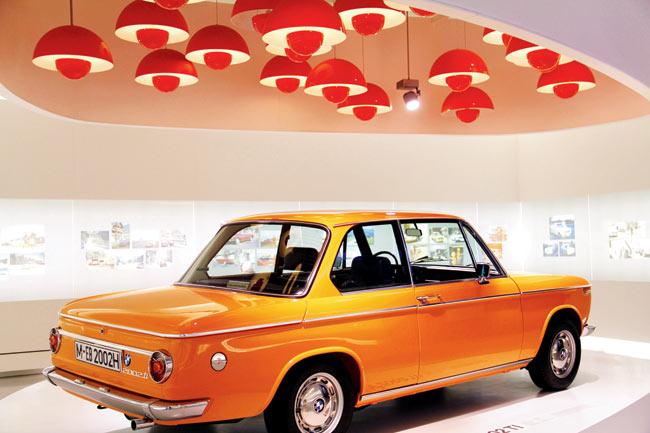
Cars on display at the BMW Museum
Over an area of 5,000 square metres, vehicles, themes, architecture, design and media concepts combine to provide a stellar brand experience. I stroll through the museum’s ‘roads’ taking in 25 different topics from the history of the company and aerodynamics to design icons and motorcycle racing. I love the Kinetic Sculpture that features 714 aluminum balls hung with almost-invisible fine steel wires each moved by individually computer-controlled motors.
I enter the Munich transit system called the U-bahn, which has architectural panache. Blue pillars, pea-green walls and orange signs electrify the mirrored ceilings with fluorescent lighting. Königsplatz station, which is in the heart of the Museum quarter, displays murals and artworks from the nearby museums and art collections. At the U3 Thalkirchen station, colourful life-size murals of giraffes, elephants and lions line a ramp that leads to the nearby zoo. A fitting tribute to the city that even its stations are temples of art!
I head back to Marienplatz and watch a brilliant violinist play his heart out to a large crowd. When Birgit tells me that most of what I see has been reconstructed after the WWII, and that the medieval facades and towers were meticulously re-created, I mutter with admiration, “Oh, these Germans!”
 Subscribe today by clicking the link and stay updated with the latest news!" Click here!
Subscribe today by clicking the link and stay updated with the latest news!" Click here!







